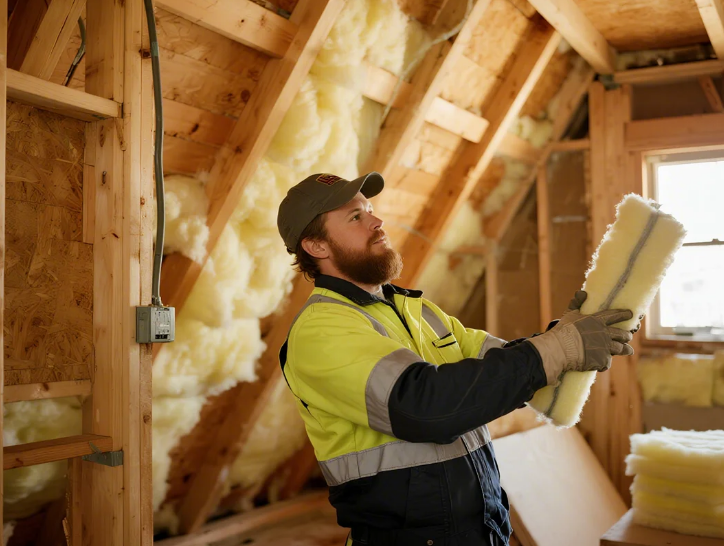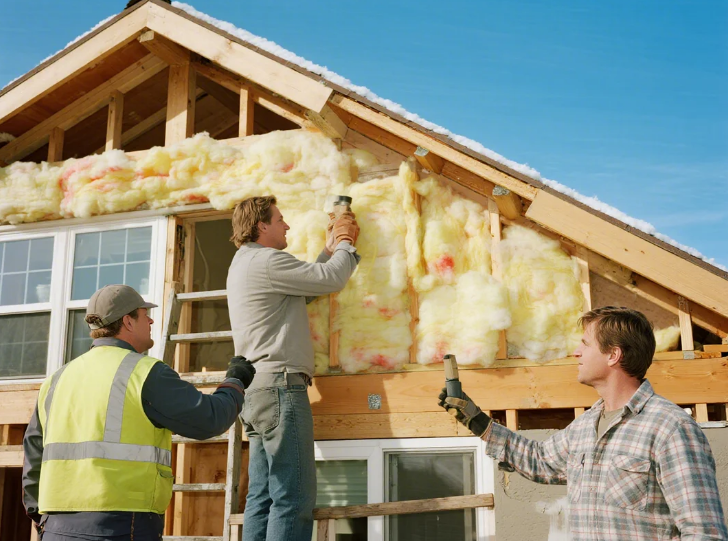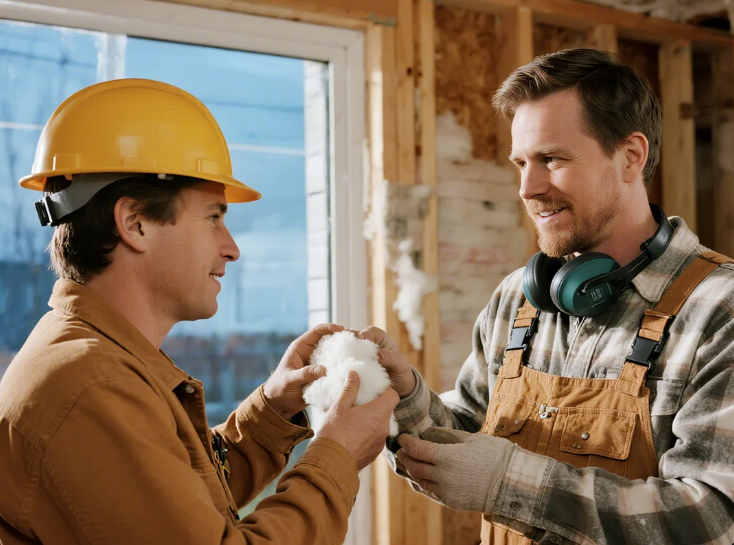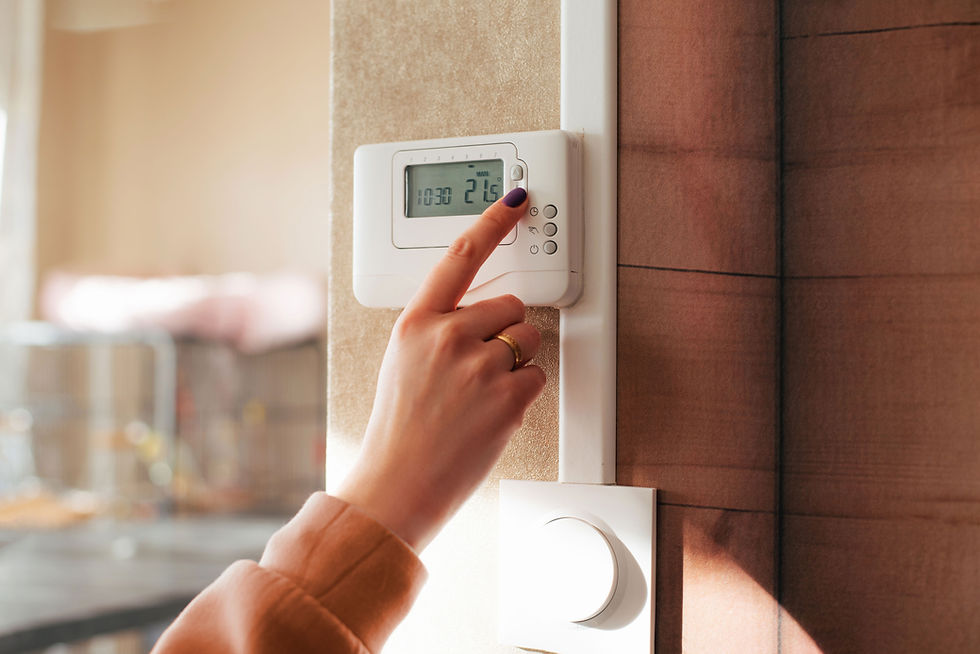The Great Insulation Hoax: Are Your Builders Making You Pay More for Energy? builder grade insulation scam?
- Dennis Asis

- Aug 24
- 4 min read

When building or buying a home, it's easy to get caught up in the excitement of aesthetics, layout, and location. But beneath those appealing surfaces lies a potential trap: insulation. Many builders cut corners here, leading to future higher energy bills for homeowners. In this post, we’ll explore the reality of the insulation issue and how it could affect your finances.
Understanding Insulation
Insulation plays a crucial role in maintaining the temperature of your home. It keeps your house warm during winter and cool in summer. Its effectiveness is measured by the R-value, which reflects its resistance to heat flow. For instance, insulation with an R-value of 38 is optimal for attics in colder regions. Higher R-values mean better insulation, which can greatly reduce your energy bills.
However, some builders opt for cost-cutting by using lower-quality insulation or inadequate amounts. This practice can cause significant energy loss, compelling homeowners to use their heating or cooling systems more often and driving up their energy bills.

The Cost of Cutting Corners
When builders skimp on insulation, the immediate savings might seem appealing, but the long-term financial impact is significant. Homeowners can end up spending hundreds, or even thousands, of dollars more each year on energy bills due to poor insulation.
Consider this scenario: you move into a home that you believed would be energy efficient, only to find it chilly in winter and uncomfortably warm in summer. It might feel like a minor inconvenience, but these temperature fluctuations can rack up your energy costs quickly.

Common Insulation Mistakes builder grade insulation scam
Builders often make mistakes regarding insulation that homeowners should be aware of:
Using Low-Quality Materials:
Builders might choose cheaper insulation that doesn’t perform well. For example, fiberglass batts with low R-values can contribute to heat loss, forcing homeowners to compensate with higher energy usage.

Two construction workers discussing their next steps on site, surrounded by insulation material and tools, emphasizing teamwork and planning in a renovation project. Insufficient Coverage:
Many homes don’t have enough insulation in attics, walls, or basements. Inadequate insulation in these areas can lead to drafts and cold spots, leading to further reliance on heating systems.

A worker carrying out insulation work in an attic, while another person observes, creating a scene filled with ambient light streaming through the window. Neglecting Air Sealing:
Insulation alone isn’t enough. Ensuring proper air sealing is essential to prevent drafts. Builders who miss this critical step often leave homeowners facing unexpectedly high energy bills.
Ignoring Local Climate:
Different regions have unique needs when it comes to insulation. For instance, homes in colder climates should typically have higher R-values. Builders not familiar with local regulations might not supply adequate insulation, leading to energy inefficiencies. builder grade insulation scam

Construction workers build a house in a snowy setting, with one worker on the roof and others walking below as birds fly overhead.
The Impact on Your Energy Bills
What does this mean for your energy bills? Homeowners can save on heating and cooling costs simply by ensuring their homes are properly insulated. For a typical household, this can translate to a savings annually.
Poor insulation can lead to higher costs, especially during extreme weather conditions when energy usage spikes. You might find yourself paying more on bills that could have otherwise gone toward home improvements or savings.
How to Identify Insulation Issues
If you suspect your home may have insulation problems, look for these signs:
Drafts:
Feel cold air seeping through windows, doors, or outlets? This is a telltale sign of inadequate insulation.
Uneven Temperatures:
Notice drastic temperature differences between rooms? This usually indicates insufficient insulation in key areas.
High Energy Bills:
A sudden spike in energy costs without an increase in your usual usage often suggests insulation issues.
Solutions for Homeowners
If you’re dealing with insulation issues, here are actionable steps to address them:
Get an Energy Audit:
Hiring a professional to carry out an energy audit can identify weak spots in your home’s insulation. A thorough examination can lead to effective recommendations to enhance insulation and seal any air leaks.
Upgrade Your Insulation:
If your current insulation is outdated or lacking, consider upgrading to materials with a higher R-value. Investing in quality insulation can pay off over time by reducing energy costs.

A technician uses a thermal imaging device to inspect insulation inside a building, ensuring optimal energy efficiency and identifying potential heat loss areas. Seal Air Leaks:
Alongside upgrading insulation, sealing any gaps around windows, doors, and outlets can significantly improve comfort levels in your home and reduce drafts. Simple weatherstripping can make a big difference.
Consider Professional Help:
If you’re unsure about making insulation upgrades yourself, seek out a qualified contractor. They will have the expertise needed to improve insulation effectively and safely.

A construction worker examines wall insulation with a flashlight, clipboard in hand, ensuring quality standards are met in the building process.
Final Thoughts
The great insulation hoax affects many homeowners. Builders cutting corners can lead to increased energy bills and discomfort in your home. By understanding the importance of proper insulation and taking proactive steps to ensure quality, you can save money while creating a more comfortable living space.
Don’t let inadequate insulation drain your finances. Now is the time to take action and ensure your home is energy-efficient and cozy for years to come
Head over to our Resource Section for more insights and useful references.





Comments